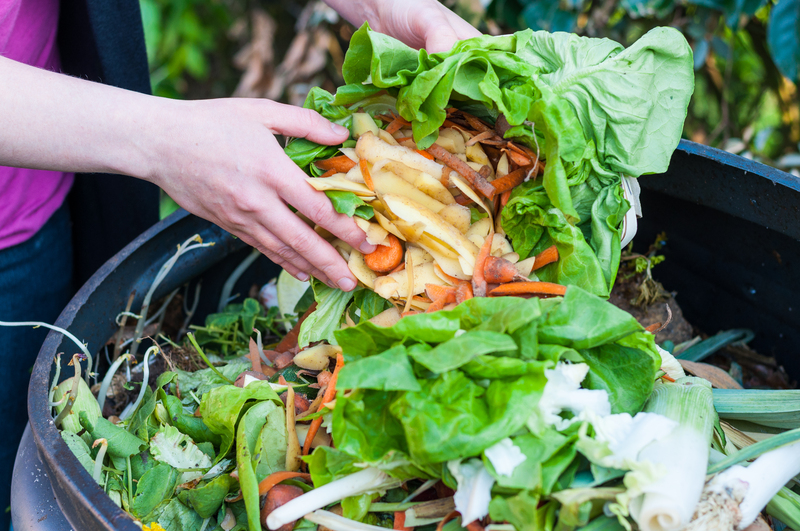Effective Strategies for Minimizing Your Plastic Footprint
Plastic pollution is one of the most pressing environmental concerns of our time. Millions of tons of plastic waste are produced every year, and a significant portion ends up in our oceans, harming wildlife and ecosystems. Therefore, understanding and implementing strategies for minimizing your plastic footprint is crucial for anyone interested in sustainable living. This comprehensive article provides actionable and effective strategies to reduce your plastic consumption, helping you contribute to a cleaner, greener planet.

Understanding Your Plastic Footprint
Your plastic footprint is the total amount of plastic you use and dispose of, directly or indirectly, in your daily life. It encompasses single-use plastics, packaging, household items, and even clothing made from synthetic fibers. By identifying and addressing the key sources of plastic in your life, you can make significant strides toward reducing your environmental impact.
Why Is It Important to Minimize Plastic Waste?
- Plastic does not biodegrade easily, persisting for hundreds of years.
- Microplastics contaminate water, soil, and food chains.
- Wildlife is at risk due to ingestion and entanglement.
- Plastic production contributes to climate change through fossil fuel use.
Actionable Strategies for Minimizing Your Plastic Footprint
Let's explore some practical and effective approaches to minimize your plastic waste and live more sustainably.
1. Evaluate and Audit Your Plastic Use
The first step in reducing your plastic footprint is to identify where plastics enter your life. For one or two weeks, track your usage of various plastic items and packaging. Consider:
- Food packaging
- Beverage bottles
- Personal care products
- Cleaning supplies
- Clothing and textiles
Once you have a clear picture, focus on the areas where plastic use is highest and easiest to replace. Knowledge is power--understanding your consumption is the foundation for meaningful change.
2. Switch to Reusable Alternatives
Single-use plastics are a major contributor to pollution. Investing in reusable products is one of the most effective strategies for minimizing your plastic waste. Consider these swaps:
- Reusable shopping bags: Opt for cloth or sturdy bags instead of plastic ones.
- Water bottles: Use stainless steel or glass bottles to avoid single-use plastics.
- Coffee cups: Carry a reusable travel mug for your daily caffeine fix.
- Food containers: Store leftovers in glass or stainless steel containers.
- Straws and cutlery: Bring reusable alternatives to avoid disposables when eating out.
3. Buy in Bulk and Choose Minimal Packaging
Many single-use plastics originate from packaged foods and consumer goods. Reduce your plastic footprint by:
- Shopping at bulk stores: Bring your own containers and bags to fill with grains, nuts, produce, and household staples.
- Favoring minimal packaging: Choose products that use recyclable or compostable packaging, or none at all.
- Avoiding individually wrapped items: Select larger quantities or multi-use packs to minimize waste.
4. Make Sustainable Choices in Personal Care
Many personal care products come in plastic packaging or contain microplastics, tiny beads that are harmful to marine life. Here's how to address this issue:
- Bar soap instead of liquid soap: Bar soaps usually come in paper wrapping and have less plastic waste.
- Refillable toiletries: Look for shampoo, conditioner, and lotions available in bulk or refill stations.
- Choose natural loofahs and brushes: Avoid synthetic sponges and brushes made from plastic fibers.
- Avoid products with microbeads: Choose all-natural exfoliants instead.
5. Opt for Eco-Friendly Clothing
Fast fashion relies heavily on synthetic materials such as polyester, nylon, and acrylic--all made from plastic. To reduce your clothing-related plastic contribution:
- Buy fewer, higher-quality garments: Focus on longevity over quantity.
- Choose natural fibers: Prefer clothing made from organic cotton, linen, wool, or bamboo.
- Support sustainable brands: Research companies with ethical production practices and recycled materials.
- Wash clothes in cold water with full loads: This reduces the shedding of microplastics.
6. Recycle Properly and Participate in Local Initiatives
Recycling alone won't solve the plastic problem, but it's an important part of the solution. To ensure your efforts make an impact:
- Familiarize yourself with local recycling rules: Know what plastics are accepted in your municipality.
- Rinse containers before recycling: This prevents contamination and helps with effective recycling.
- Participate in community cleanups: Join or organize local events to remove plastic litter from natural areas.
7. Support Businesses with Sustainable Practices
Consumer demand drives corporate change. When you support brands that use sustainable packaging and eco-friendly materials, you help shift the market. Look out for:
- Zero-waste shops and package-free stores
- Companies using biodegradable, compostable, or recycled packaging
- Brands advocating for plastic reduction and take-back programs
- Restaurants reducing or eliminating single-use plastics
8. DIY Solutions for Everyday Life
Taking a hands-on approach can further minimize your plastic footprint and often saves money in the process.
- Homemade cleaning products: Use vinegar, baking soda, and lemon instead of plastic-packaged cleaners.
- Make your own snacks: Prepare granola, trail mix, and baked goods at home to avoid plastic wrappers.
- Reusable wraps: Create beeswax food wraps as alternatives to plastic wrap.
- Gardening: Compost food scraps and grow your own herbs and veggies, reducing packaged produce purchases.
9. Educate and Advocate
One of the most powerful ways to multiply your impact is to share your knowledge and advocate for plastic reduction in your community. Consider:
- Hosting workshops or talks to raise awareness about plastic pollution
- Pushing for policy changes at the local, state, or national level
- Supporting environmental organizations and grassroots movements
- Leading by example with friends, family, and coworkers
Addressing Common Challenges in Reducing Plastic Consumption
Cost Concerns
Some sustainable alternatives are more expensive upfront. However, reusables like water bottles and shopping bags quickly pay for themselves. Look for community groups or swaps for affordable or second-hand eco-friendly items.
Convenience Versus Sustainability
Changing habits takes time and effort. Begin with one or two changes and gradually add more over time. Prepare reusable kits (bags, cutlery, containers) in your car or backpack to make sustainable choices easier on the go.
Availability of Alternatives
While bulk stores and package-free shops may not be accessible everywhere, options continue to grow as demand increases. Shop online for sustainable goods, advocate for plastic-free sections in local stores, and connect with like-minded individuals locally or online for support and ideas.
Long-Term Benefits of Minimizing Your Plastic Footprint
Adopting strategies to minimize plastic waste offers more than just environmental benefits. Over time, you'll notice:
- Financial Savings: Reusable options are more cost-effective in the long run.
- Health Improvements: Reduced exposure to chemicals like BPA and microplastics found in many plastic products.
- Cleaner Communities: Reduced litter and a more pleasant living environment.
- Satisfaction and Empowerment: Making sustainable choices fosters a sense of purpose and responsibility.

Plastic-Footprint-Reducing Strategies for Families and Organizations
At Home
- Teach children the importance of reusing and recycling.
- Involve the whole family in audits and plastic reduction goals.
- Set up recycling stations and compost bins for easy access.
At Work and School
- Encourage use of reusable bottles, mugs, and lunch containers.
- Advocate for office or school-wide recycling and composting programs.
- Organize educational programs on minimizing plastic waste.
Community Initiatives
- Participate in local river, beach, or park cleanups.
- Lobby for bans on certain single-use plastics.
- Support local refill stations and eco-friendly businesses.
Embracing a Plastic-Conscious Lifestyle
Reducing your plastic footprint is a process, not a one-time event. Every small change adds up, and over time, your efforts will make a tangible impact. Start with manageable steps, educate yourself and those around you, and celebrate your progress.
By choosing sustainable products, advocating for smarter policies, and supporting greener businesses, you are actively contributing to a world with less plastic pollution and healthier ecosystems.
Conclusion: Take Action Today
Plastic pollution is a collective problem that requires both individual and systemic change. By following these effective strategies for minimizing your plastic footprint, you become part of the solution. Remember, it's not about perfection, but progress--each step you take brings us closer to a cleaner, healthier future for all.
Begin your plastic reduction journey today and inspire those around you to do the same. Together, we can make a meaningful difference!